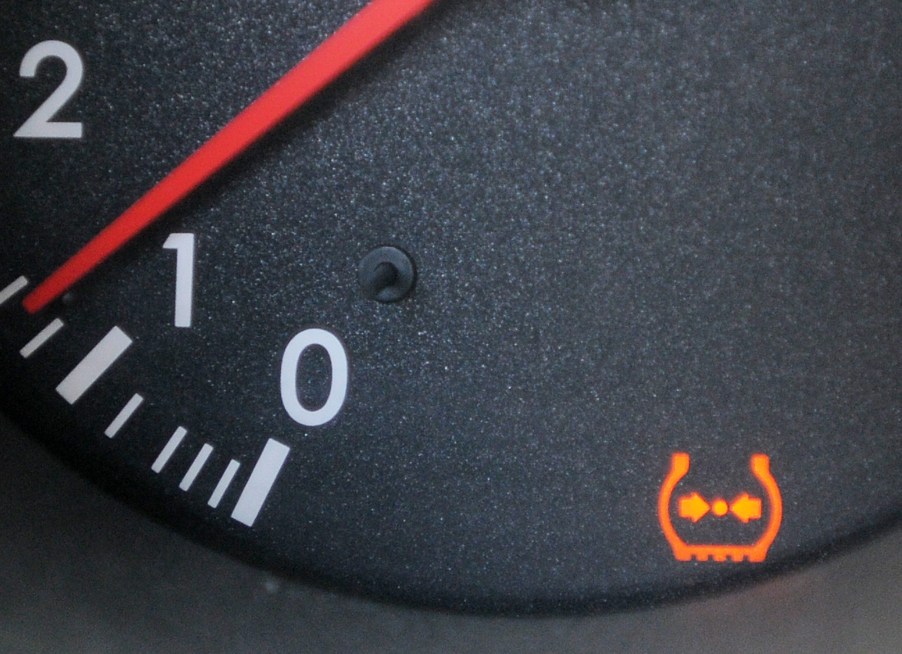
How Does the Tire Pressure Monitoring System Work on Your Car?
On our new cars and trucks, one of the most useful options is the TPMS or Tire Pressure Monitoring System. They’re great because they show us, usually with a glance at the dash, the pressure in our tires and if they’re low or high. It certainly beats getting out and checking your tire pressure manually. But how do these systems work on tires that are constantly rolling?
Are TPMS systems required by law?

In 2000, congress passed the TREAD Act which mandated TPMS systems in all passenger cars, SUVs and light trucks sold as of 2007. They must warn a driver when a tire is “significantly” under-inflated. It’s illegal for a repair shop to disable or tamper with a TPMS system.
The law also standardized the little yellow “flat tire” warning light you get in the dash, so that’s why your Toyota RAV4 has the same warning light as your neighbor’s Rolls Royce.
How do tire pressure sensors communicate?

The two types of sensors for systems include direct and indirect. The indirect system uses your car’s anti-lock brake or anti-slip sensors to determine if a wheel is spinning at a different rate than others, and then it compares that data. If the computer decides a wheel spins faster, then it’s likely underinflated. So, it doesn’t actually measure the pressure, it just tells you that a tire is low compared to your other three.
The direct system measures the pressure, and in some cases even your tire temperature. The direct system requires a device within each wheel that has a small radio transmitter in it that sends a signal to your cars’ computer. The little devices have batteries in them that are generally rated to last about a decade. You can’t use a wire because within just a few feet, the wires would get wrapped around your axle.
Some manufacturers use both systems and call it a Hybrid system, with sensors backing each other up.
Each system has drawbacks

However, the two drawbacks of the direct system are the cost to replace a device if it gets broken and the hassle it takes to change the little battery when they do go bad, if that’s even an option. Some manufacturers seal their sending units and changing the battery is not an option. It usually costs more than the indirect system because its hardware, and not software, based.
If all four of your tires are low, your computer won’t likely notice so it still requests you to check your pressures.
Can you get an aftermarket Tire Pressure Monitoring System for a trailer?

Yes, you can buy an aftermarket system if your car or truck didn’t come with one from the factory. These systems can cost anywhere from $40 to $200, depending on features. But the drawbacks include having to buy and wire in an extra screen inside your car to display the readings, as well as adding new valve stem caps that are the senders for the system. However, these systems can be useful if you have a trailer and want to add a TPMS system to it.
Online you can find sensors that claim to be direct replacements and communicate with your car’s computer. In some mechanics’ experiences, however, like those at Car Talk, it’s not always a slam dunk that they work correctly. They still require you to remove a tire, install a sensor, and then reinstall a tire. Each sensor costs $10 to $30 each.
If you don’t have a TPMS, and don’t want to install one, one option is one that your dad probably tried on his old Buick: color changing valve stem caps. For decades at your local Auto Zone or Pep Boys you’ve been able to buy caps that show you red, yellow, or green bands that indicate a properly inflated tire. They’re about $12 for a four-pack.


